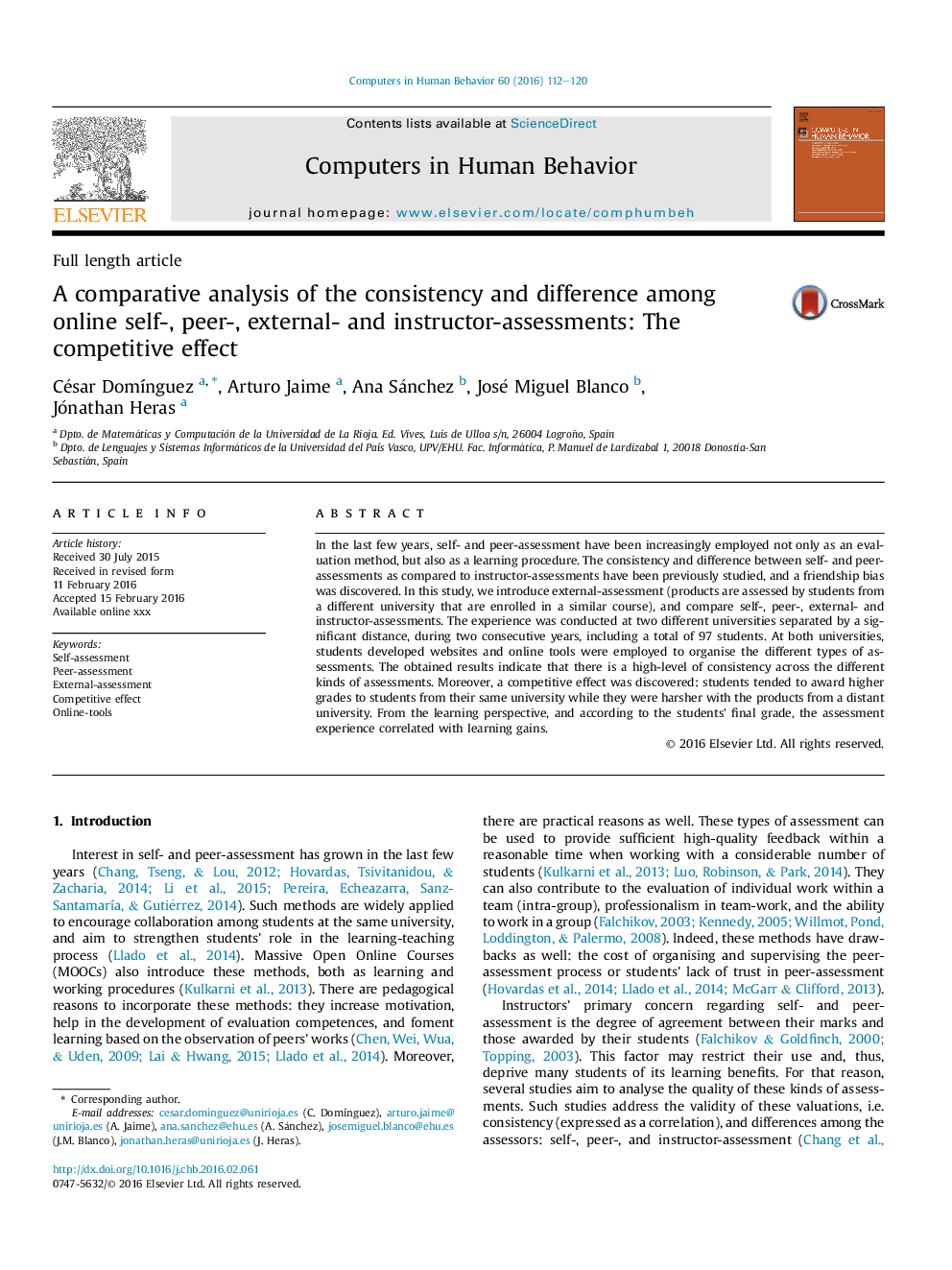| Article ID | Journal | Published Year | Pages | File Type |
|---|---|---|---|---|
| 6837212 | Computers in Human Behavior | 2016 | 9 Pages |
Abstract
In the last few years, self- and peer-assessment have been increasingly employed not only as an evaluation method, but also as a learning procedure. The consistency and difference between self- and peer-assessments as compared to instructor-assessments have been previously studied, and a friendship bias was discovered. In this study, we introduce external-assessment (products are assessed by students from a different university that are enrolled in a similar course), and compare self-, peer-, external- and instructor-assessments. The experience was conducted at two different universities separated by a significant distance, during two consecutive years, including a total of 97 students. At both universities, students developed websites and online tools were employed to organise the different types of assessments. The obtained results indicate that there is a high-level of consistency across the different kinds of assessments. Moreover, a competitive effect was discovered: students tended to award higher grades to students from their same university while they were harsher with the products from a distant university. From the learning perspective, and according to the students' final grade, the assessment experience correlated with learning gains.
Related Topics
Physical Sciences and Engineering
Computer Science
Computer Science Applications
Authors
César DomÃnguez, Arturo Jaime, Ana Sánchez, José Miguel Blanco, Jónathan Heras,
